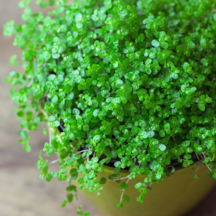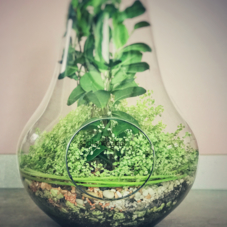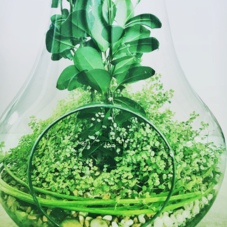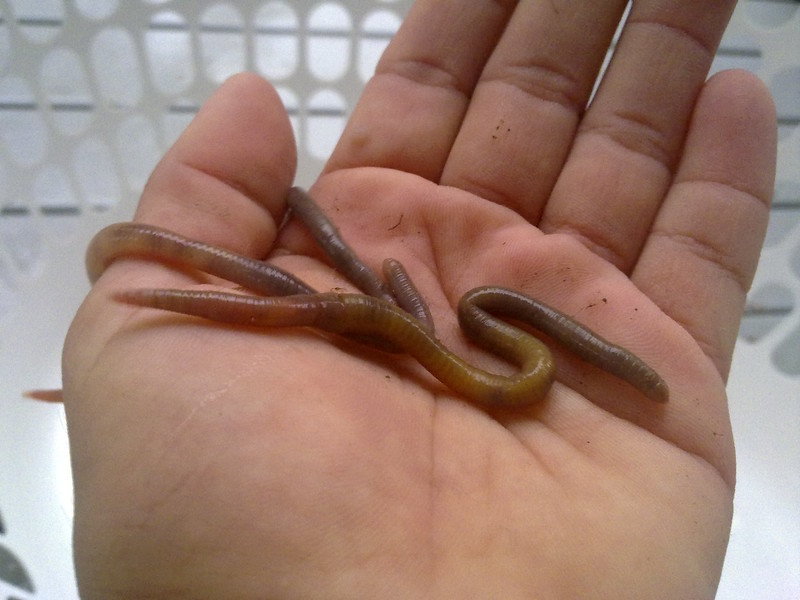
The thick and lush leaves on the Babys tears plant appear stunning when they fall from a basket hanging. But, the idea of keeping these delicate plants is daunting! These plants are easy to care for and are ideal houseplants. It has bright yellow leaves, with delicate white flowers. In the outdoors, you’ll typically see them as they are used as a covering for the ground or in garden ornaments. They are native to the southern part of Europe and primarily found in Italy, Sardinia, and Corsica. Baby’s tears are commonly considered to be a weed of the environment within Western Europe and California.
Types of babys tears plant
Among the different types of babys tears plant, the green-leaf variety is the most prevalent and dominant. But babys tears plants also have some other types which are as follows.
- Soleirolia soleirolii’Aurea’: These cultivar has yellow-green instead of green leaves. It is a bit smaller than other varieties of this species and doesn’t grow as wide. Soleirolii’Aurea is more successful in the shade with dappled light.
- Soleirolia soleirolii’Golden Queen”: Leaf margins of this variety are yellow.
- Soleirolia soleirolii’Silver Queen”: The variety have silver-gray foliage in color.
- Soleirolia soleirolii’Variegata’: This variety has silverish, variegated leaves in colors that have white streaks. Earlier this was called ‘Argente
The best time to add worms to your plant is when your plant has proper food for earthworms Read More
When and how to prune Babys Tears Plant

If you want to grow babys tears plants then you should know when and how to prune this plant.
It is not necessary to cut a babys tears plant, pruning enhances appearance of babys tears plants and the growth of new plants. If you want babies tears to be a companion plant for another plant in your house, you can trim it to ensure it stays within its boundaries. Pruning is useful for small containers. In an enclosed space, the tears of a baby can quickly overwhelm other miniature plants.
How to Propagate Babys Tears Plant

The baby’s tears plant is easily propagated, but particularly prolific during the growing season. They perform well in the seasons of spring as well as summer. Anywhere the stems touch soil, they’ll form roots. It can spread all over the place. you’d like to limit the plant’s growth within its boundaries but don’t want it to decimate the overgrowth, you can move it into a container. These plants aren’t usually propagated via seeds. Babys Tears plant can be propagated through cuttings and division.
1. Propagate Babys Tears Plant via division
Steps to propagate babys tears plants via division.
- In order to divide the babys tears plant you require a trowel, anew container to grow, or an space to grow your plant.
- Cut off a portion of the stems by removing the soil and roots with a trowel of a small size. Don’t concern about causing damage to the plant, it will grow quickly.
- Replant the section in well-drained, moist potting soil.
2. Grow Babys Tears Plant via stem cutting
- you will need scissors for pruning, a pot container or a fresh water soaked potting mix.
- Healthy stems of babys tears plant should be at least two inches in length. Take off the leaves at the base and keep the leaves that at the very top of stem.
- Create small holes into the media using your fingers and then plant the cut ends in the holes. To improve the results, soak the cut edges in water and then soak them in the rooting hormone prior to placing the cut tips into the hole.
- Cover the cuttings with a transparent glass or plastic dome. After 3-4 weeks of growth, the stems will be well-rooted.
When and how to bloom babys tears plant
Baby’s tear plants grow tiny, creamy white or small flowers. They are easy to bloom outdoors in the late spring. These plants don’t have petals and aren’t attractive to look at, so they are not utilized for decoration. The tears of a baby rarely bloom when they are kept in a nursery or indoors.
How to do potting and repotting of babys tears plant
- Containers are a suitable environment for plants that shed tears on babys tears plants. The plants will spread and appear attractively across the sides of a small hanging container. In a terrarium, plants grow towards the edge of the glass, concealing the soil. Babys tears plants work excellently as edging plants in a mixed garden.
- It is necessary to replace plants that shed tears on babies on a regular basis as they grow rapidly. Find a large pot. You can also purchase an industrial potting soil that is lightened with peat moss and perlite..
- Don’t remove plants from pots by their stems or leaves because the stems are very fragile. The pots should turn upside down. Now tap, press on the drainage hole using pencil to push the plants to release. Plant the roots in the new plant potting mix. Then, water them thoroughly.
FAQs
The transpiration process happens in plants, so it loses moisture from their leaves and increases the humidity around them. It is used as a groundcover with ferns and other plants that love moisture and humidity.
It’s so easy to propagate the baby tears plant that you can spread it without any problems. Here are the steps to propagate babys tears plants in water.
- Pinch off a bunch of stems and place the ends of the stems in water to let them root.
- Keeping leaves in water for too long will cause the leaves to rot, so be sure to pinch off the leaves at the bottom of the stems.
Scientific name of baby tears plant: Micranthemum micranthemoid
